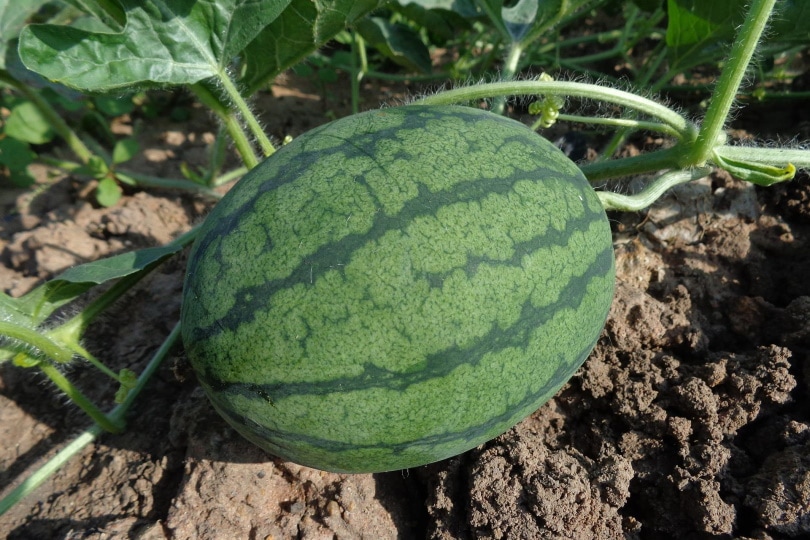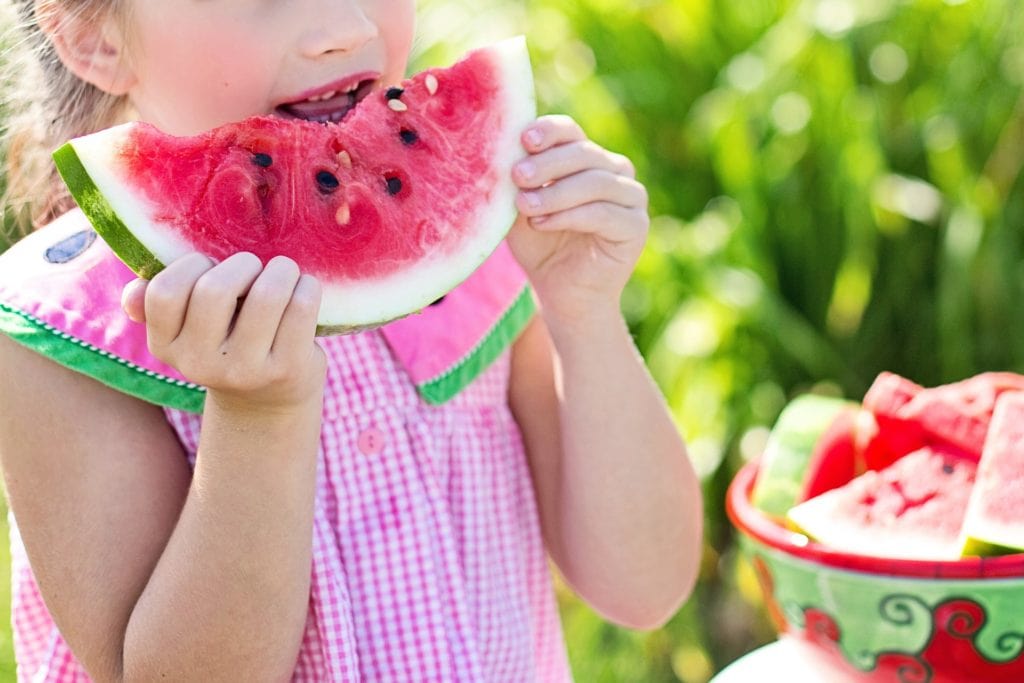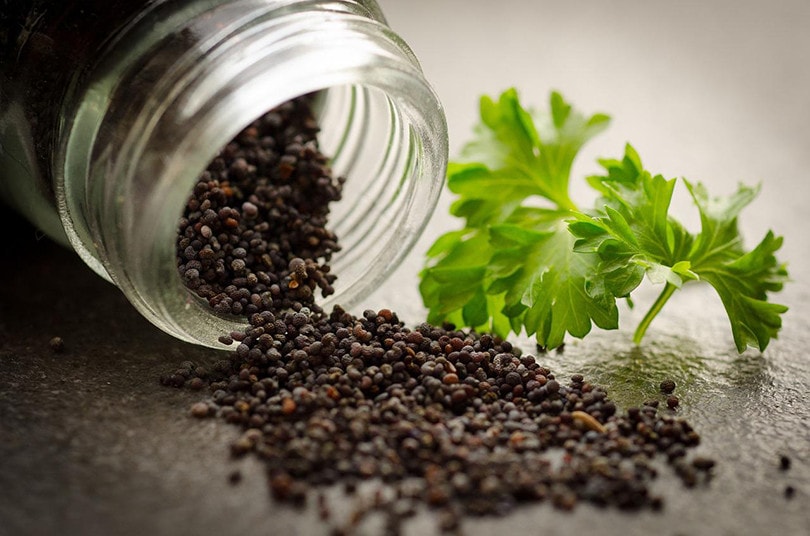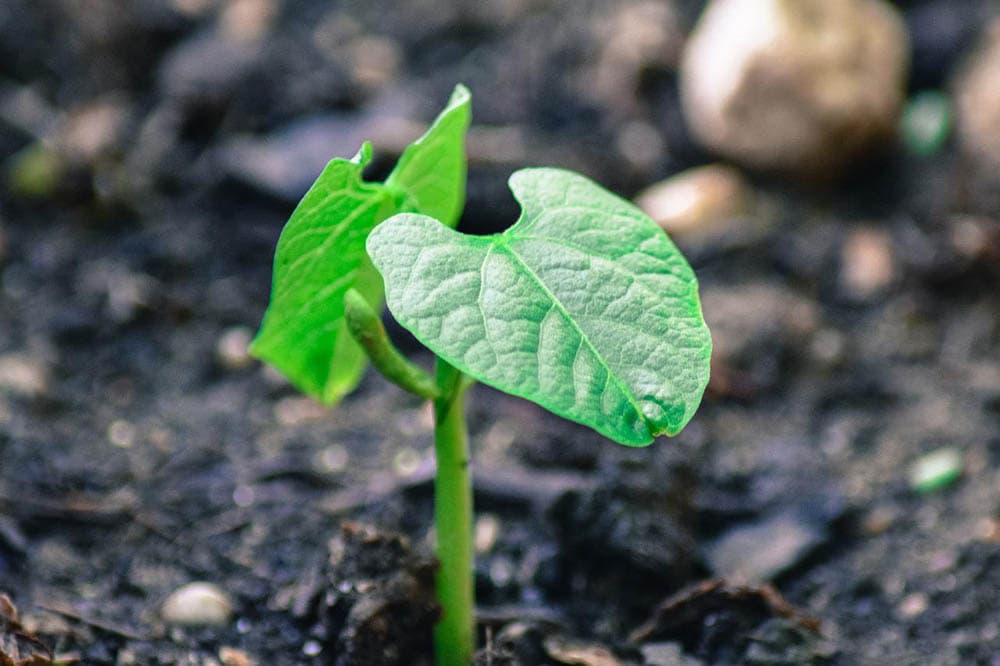How & When to Plant Watermelon? 4 Simples Steps & Tips
-
Pete Ortiz
- Last updated:

Watermelon is a winding fruit closely related to pumpkins and cucumbers grown and consumed worldwide. China is the world’s largest producer of watermelon and accounts for 60% of total output. The largest ever recorded watermelon specimen was in Sevierville, Tennessee, USA. The watermelon was grown by Chris Kent in 2013 and weighed record-breaking 350.5 pounds!
Growing watermelon is fun as well as therapeutic. At the height of its leafing, it covers the ground with heart-shaped dark green leaves, occasionally dotted by yellow flowers. A fully grown watermelon is appetizingly deep pink or orange in color.
Need to learn more about watermelon growing? Here is a step-by-step guide from seed to table.
When Is The Right Time To Plant Watermelons?
Watermelons are humidity and heat-loving plants that do very well in late spring and summer. They require over 6 hours of exposure to sunlight and day and nighttime warmth of over 65 degrees Fahrenheit.
In central and southern states of the USA, you should plant watermelon outdoors immediately after the last threats of frost are over. The last frost varies from state to state. The earliest last frost ends in February. Other states like Montana may receive light frost until early June.
In the case of Montana, growing watermelons directly on the field before June is dangerous. Similarly, sowing seeds after June will result in a poor yield as fall temperatures will drop while watermelons are still in the field. You can get a head start by obtaining seed trays and cocopeat a month before the last frost and start growing watermelons indoors. Once you are certain the weather is warm enough, transfer watermelon seedlings outdoors.
Remember to provide indoor seedlings with warmth, water, nutrients, and artificial sunlight.

The 4 Simple Steps on How to Grow Watermelons
1. Site Selection
Watermelons are very leafy and require ample space where they can freely spread out. Select a flat and wide site that will accommodate the population of watermelon you are hoping for. If you are targeting 50 plants, a 30 x 15-foot plot is suitable.
When selecting a site, the area should be unobscured from sunlight, flat, and have well-drained, fertile soil. It should also be free from farm animals such as goats, bunnies, pigs, and chickens. These animals eat premature fruits, and a fortified chain link fence will keep them away.
Lastly, a good site is where you haven’t grown plants from the watermelon family, such as squash, cucumbers, melons, or gourds recently. This is to avoid the risk of transferable diseases and pests.
2. Seed Selection

There are over 1,200 varieties of watermelons concentrated in 50 species. Most of these varieties are hybridized to grow in different conditions. Knowing your local environmental conditions will help you select the best watermelon seeds. Most subsistence farmers usually preserve seed from the previous year’s harvest.
Select healthy and big watermelons from your farm and carefully remove seeds. Avoid small fruits from plants that appear to have diseases. Wash off pulp from the seeds and place them in a jar full of clean, untreated water for 3–4 days. On the last day, discard any floating seeds along with the water.
Rinse and dry the remaining batch on a paper towel at room temperature for one week, then store the seeds in an airtight jar for the next growing season.
Alternatively, you can source seeds from the nearest agrovet or online. Recommended varieties are Golden Midget, Sugar Baby, and Sweet Beauty. They take less than 90 days to mature and bear average-sized sweet fruits.
3. Planting site preparation
Watermelon does very well in fertilized soil with mature, natural manure. Farmers will be required to supply the soil with extra nutrients and minerals to boost the output of poor soil.
During soil preparation, you will also determine the pH value of your garden by using locally sourced soil pH testing kits or taking samples to a certified agriculture lab. A pH of between 6 and 6.5 is perfect for these juicy fruits. Beyond that, there are a few general things you must do to prepare the land for watermelons.
Start by digging up the soil to remove weeds and large lumps. Plowing also removes stones and unwanted materials. Mixing the soil with compost and sand will improve mineral content, and increase beneficial microbial activities, aeration, and drainage.
Next, prepare beds for planting about 7 inches high and 4.5 feet wide, then dig a shallow 4 to 6-inch-deep planting trench in the middle of the bed, lengthwise. Trenches help gather water and direct it to the plant roots.
Watermelons can also do well in 60-gallon containers filled up with manure, sand, and soil.
4. Planting

After preparing shallow trenches, allow the soil to warm up for about 3 hours before digging an inch deep and 18 to 24 inches apart for planting holes.
In each hole, place 2 or 3 seeds and thinly cover with soil. Add water if the soil is too dry or there are no signs of rain. If you are growing watermelons in dry areas, lay down drip lines in trenches before planting and ensure each nipple is directly above the planting hole.
Caring for Germinated Watermelons
Watermelons require full-time attention to produce the biggest and sweetest fruits. Here are some essential steps to achieve the best results.
- Watering: A watermelon is 92% water, and so needs a lot of water to grow healthily. Normally, 2 inches of water per week is enough for watermelons. But during the early growth stages, water absorption is low, and the demand gradually increases with time. The most water-intensive cycle starts roughly at day 45 at the onset of the flowering period. Continue adjusting the water supply as the fruit forms until harvesting. However, don’t overwater or use overhead irrigation systems such as sprinklers. Overwatering results in tasteless fruits and potential root rot. Sprinkler irrigation, in contrast, causes fungal diseases such as powdery mildew. Mulching with straw, grass, or mulch paper prevents evaporation and reduces water demands.
- Fertilizer: Watermelons are heavy feeders and require a nutrient boost. Combining manure and granular and liquid fertilizers will increase nutrient content in the soil. There is no strict fertilizer schedule for melons as it depends on the soil’s nutrient content. During planting, use phosphatic fertilizers for vibrant roots. 4–6 weeks after germination, increase foliage growth by side-dressing plants with nitrogenous fertilizer. Once male flowers start appearing, change to potassium and phosphatic fertilizers as these are good for fruiting. Tip: Mix nitrogenous fertilizer with 5 to 6 inches of soil to prevent nitrogen burn. Mixing micronutrients such as boron in the dressing regime concentrates the fruits’ flavors and sweetness.
- Weed control and spraying: Weeds compete with watermelons for nutrients and substantially lower yields. In some cases, they may even harbor pests and transmit diseases. Farmers mow, mulch, or uproot weeds 2–4 weeks after planting to prevent this, and another weeding is done immediately before flowering.: Spraying, on the other hand, controls diseases, pests, and weeds. Diseases such as downy and powdery mildew, fusarium wilt, leaf spot, and cucumber mosaic disease affect watermelons. Spraying your plants after every 10 days with a mixture of different fungicides will help control diseases. Watermelons attract both good and bad bugs. Nematodes attack roots while thrips, beetles, grasshoppers, leafminer flies, melon and spider mites, squash bugs, and beet armyworms suck the life out of stems, leaves, flowers, and fruits. Rodents will also come for mature fruits with devastating effects. Go for insect-specific insecticides and cage your garden against rodents. You can use hot peppers, garlic, and soap solutions to control less harmful pests.
- Pollination: A watermelon bears both male and female flowers. Male flowers appear earlier before the female flowers and produce pollen. Open up any enclosure that will allow bees, butterflies, and birds in for pollination. If you don’t have animals for pollination, use an artist’s stroke brush. Gentle tap anthers to collect pollen and transfer it to the sigma. You must hurry as male flowers start dying as soon as female flowers blossom.
- Harvesting: It takes 8–9 weeks after pollination to harvest. People have different ways of telling if a watermelon is mature or not. Typically, the fruit is ready for harvesting if the curly tendril that connects it to the vine has dried out. A good tap resonates with a hollow sound, a sign that it is mature. Lastly, the field spot(underbelly of a watermelon) must be yellow.
Conclusion
Watermelon is a succulent fruit that takes approximately 3 months to mature. Planting the fruits starts with the proper preparation of soil and seed selection. Weeding, fertilization, pest control, and watering are must-dos as the fruit grows. Along the way use fungicides, natural pest killers, and home DIY solutions to protect your fruits.
See also:
- https://www.frutas-hortalizas.com/Fruits/Origin-production-Watermelon.html
- https://www.guinnessworldrecords.com/world-records/heaviest-watermelon
- https://www.gardeningknowhow.com/edible/fruits/watermelon/types-of-watermelon.htm#
- https://extension.umn.edu/fruit/growing-melons-home-garden#
- https://cdn-ext.agnet.tamu.edu/wp-content/uploads/2014/09/how-to-grow-melons.pdf
- https://lgpress.clemson.edu/publication/watermelon-fungicide-guide/#
Featured Image Credit: Pun Kaset, Pixabay
Contents


